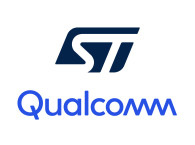
IEEE 802.11ah-2016 defines a narrow-band orthogonal frequency division multiplexing (OFDM) physical layer (PHY) operating in the license-exempt bands below 1 GHz, making it suitable for several potential applications, such as Internet of Things (IoT), smart grid, healthcare, smart appliances and wearables.
“The publication of IEEE 802.11ah-2016 exemplifies how comprehensive stakeholder engagement and participation can make step improvements to standards that meet the needs of industry and improve the overall end-user experience,” says Adrian Stephens, chair of the IEEE 802.11 Working Group. “IEEE 802.11ah-2016 sets the stage for advancing the connected world with more efficient and robust networking options.”
The IEEE 802.11ah-2016 standard amendment offers multiple low rates modes (starting from 150 kb/s) for extended range (up to 1 km outdoors) and higher rate modes (up to 347 Mbps) for applications requiring higher throughput. It supports outdoor deployment and can provide robust performance in large delay spread environments. Low rate modes are suitable for IoT applications, and provide whole-home coverage for battery-operated, small form-factor devices, such as temperature and moisture sensors. Higher rate modes support plug-in devices with a power amplifier, such as video security cameras.
More than 300 individuals from equipment and silicon suppliers, service providers, systems integrators, consultant organizations and academic institutions from more than 20 countries participated in the development of IEEE 802.11ah-2016. The IEEE 802.11ah-2016 standard amendment is optimized for long battery life and serving an increased number of devices with a MAC layer that enables increased scalability, higher power efficiency, and relay operation (single hop or multi-hop).
The updated IEEE 802.11ah-2016 document is available for purchase at the IEEE Standards Store: http://standards.ieee.org
IEEE 802.11 defines the technology for the world’s premier WLAN products. IEEE 802.11-based products are often branded as “Wi-Fi” in the market. IEEE 802.11 standards underpin wireless networking applications around the world, such as wireless access to the Internet from offices, homes, airports, hotels, restaurants, trains and aircraft.
www.ieee.org






